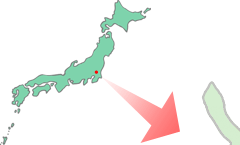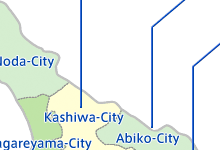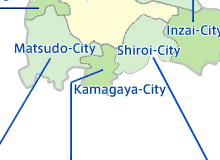
The hometown of Kashiwa Reysol is Kashiwa City, Chiba Prefecture. Historically, Reysol began in 1986 when the practice ground of the Hitachi, Ltd. Soccer Club (the predecessor of Reysol) was moved from its previous location in Kodaira City, Tokyo Prefecture, to the Hitachi Kashiwa Sports Ground. The Hitachi Soccer Team, which aimed to move up to J. League, obtained the cooperation of the local community, and established Kashiwa City as its hometown. In 1998, wishing to be a club that is familiar to the entire local area, the team expanded its area of activity to 6 cities and 2 towns in the Tokatsu Area, centered on Kashiwa City. Later, there was further expansion and merging of local governments, and today 8 cities form the club's hometown area. As a new trial in 2003, the club planned a Hometown Day while playing a home game, and this tradition has continued to the present. In keeping with the basic principles of J. League, Kashiwa Reysol aims to: be supported by the people of the local community, walk the path of a general sports club as a base for the sports culture loved by the local people, and contribute to the local community through those activities. To make these principle clear, we establish and actively announce our club concept. Reysol's desire and goal is to be a presence with deep ties to the Tokatsu Area, and a team which is loved by everyone as "our town's club."
Area
 |
Kashiwa Cityhttp://www.city.kashiwa.lg.jp/This city is the core of Reysol's hometown activities. This is a residential town surrounded by abundant nature, such as the Tone River and the Tega Swamp, and at the same time, it is also a base of commerce and culture which represents the Tokatsu Area. In March 2005, it merged with the town of Shonan. |
Abiko Cityhttp://www.city.abiko.chiba.jp/Facing the Tone River in the north, and the Tega Swamp in the south, this city is distinguished by an environment blessed with water and greenery. In recent years, the Tega Swamp has erased the stigma of having the worst water quality in Japan, and cleanup is progressing. Today it is a recreation zone where people can encounter nature in all four seasons. Inzai Cityhttp://www.city.inzai.chiba.jp/This city is blessed by its natural environment, such as the Tone River in the north, the Tega Swamp in the northwest, and the Inba swamp in the southeast. It accounts for about 60% of Chiba New Town, and acts as the core city of the New Town. |
||
Noda Cityhttp://www.city.noda.chiba.jp/Needless to say, this is soy sauce town. Agriculture is thriving, and the city is also developing as a residential town. In 2003, the city merged with the town of Sekiyado. |
 |
|||
Nagareyama Cityhttp://www.city.nagareyama.chiba.jp/ The mirin and sake brewing industries have developed in this city since it is located along the Edo River, and has a good water supply, with good water quality. With the opening of the Nagareyama Interchange of the Joban Expressway, and construction of the Tsukuba Express, a new city is being developed in harmony with nature. |
 |
|||
Matsudo Cityhttp://www.city.matsudo.chiba.jp/In 2003, Matsudo celebrated the 60th anniversary of its founding as a city. Its population ranks third in the prefecture. During the Edo Period, this city prospered as an inn town on the Mito Kaido, and due to its location on both sides of the Edo River, close to Tokyo Prefecture, it has developed as one of the leading lifestyle cities in the Tokyo metropolitan area. |
Kamagaya Cityhttp://www.city.kamagaya.chiba.jp/Since this city is less than 25 km from the center of Tokyo, it has developed as a residential town for the Tokyo metropolitan area, and in 1995 the population exceeded 100,000. The city takes advantage of its location near Tokyo, and has flourishing suburban agriculture and horticulture. |
Shiroi Cityhttp://city.shiroi.chiba.jp/Located in the westernmost part of Inba County, this city has rapidly developed due to creation of the Chiba New Town, and commuters riding into the center of Tokyo on the Hokuso Railway. This is one of the foremost pear producing regions in Japan. Fruit cultivation area is first in Chiba Prefecture and third in Japan. |


















